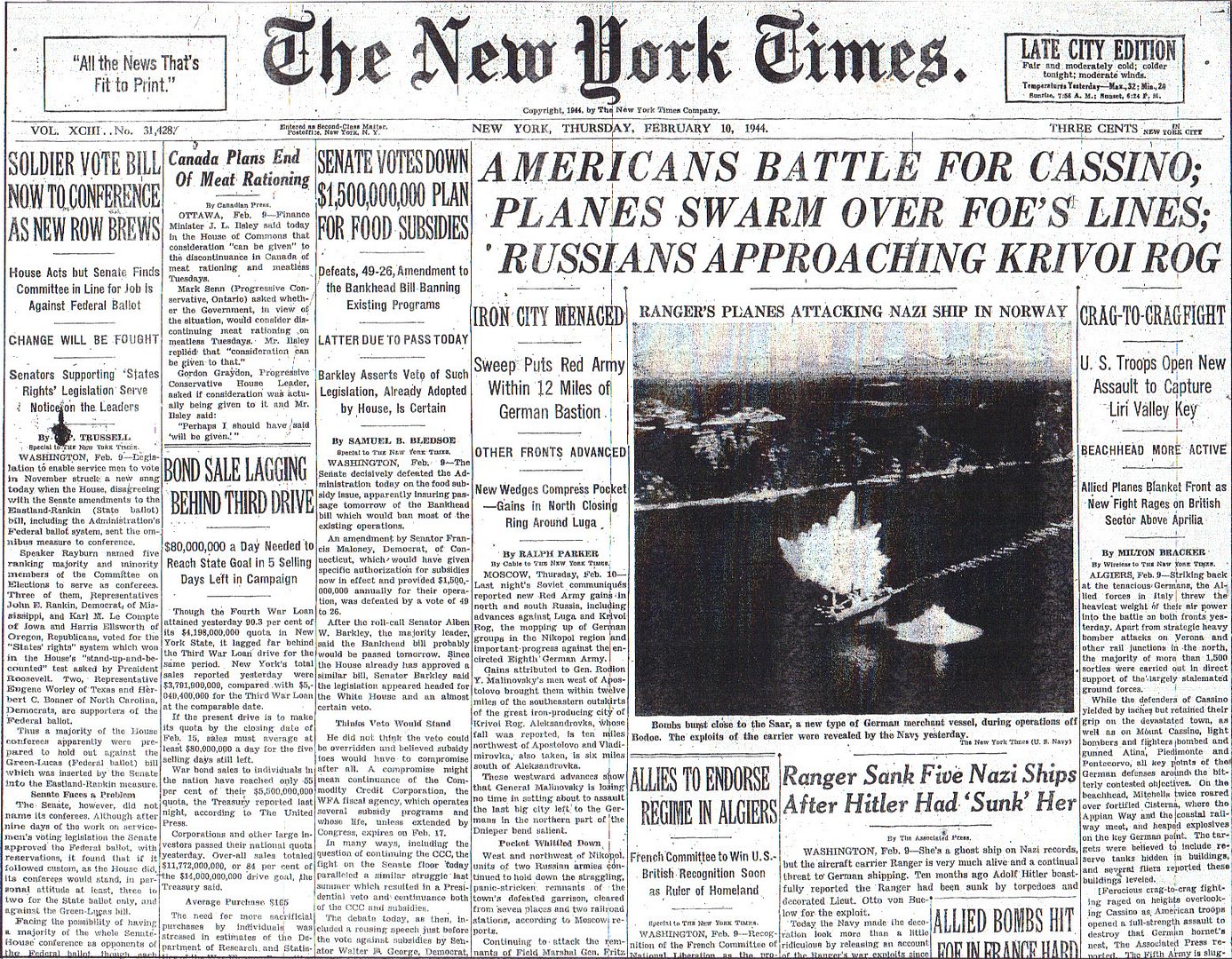
Posted on 02/10/2014 4:30:25 AM PST by Homer_J_Simpson


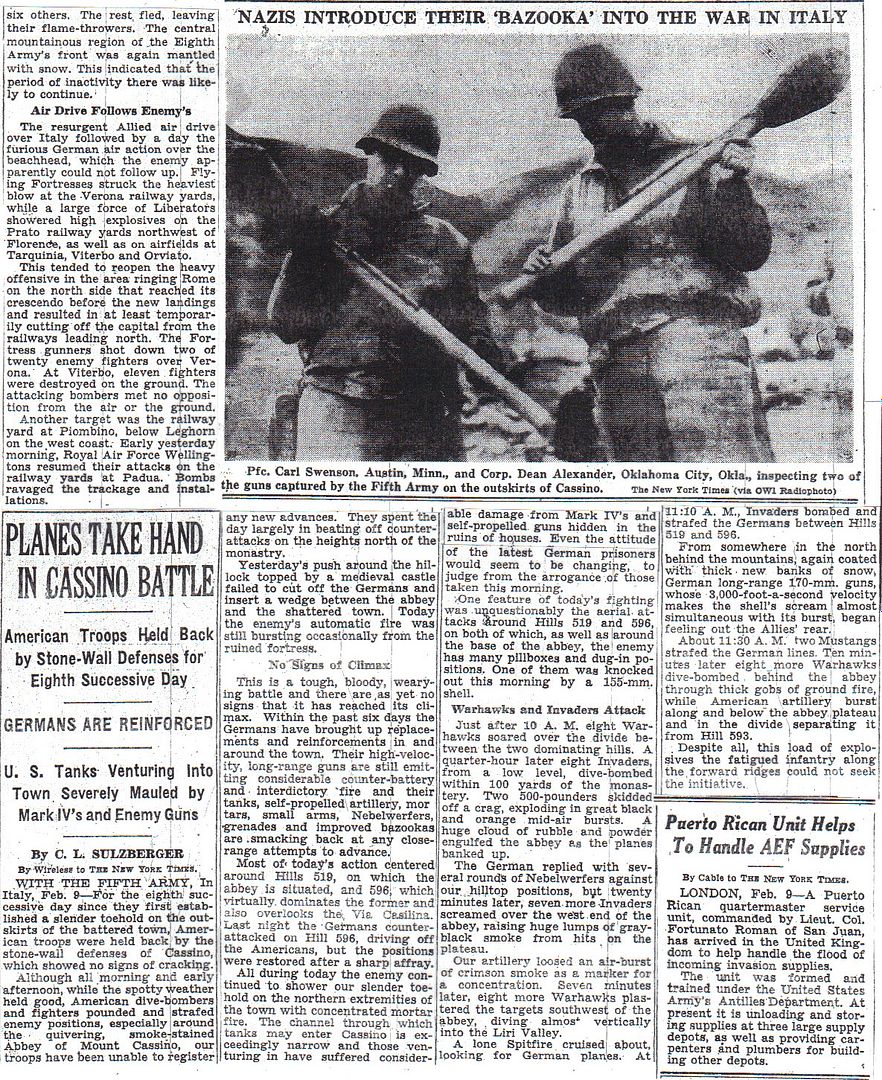

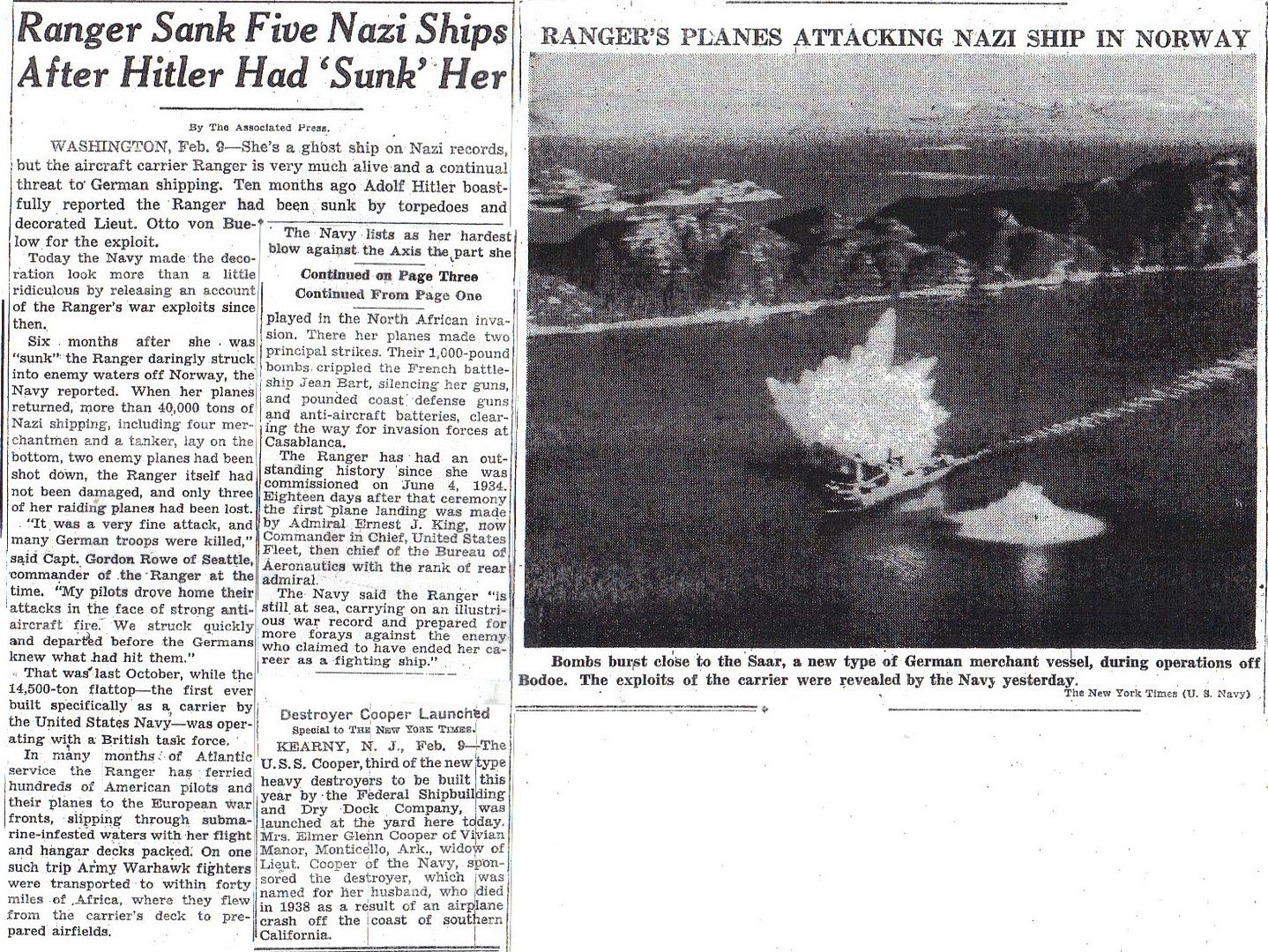

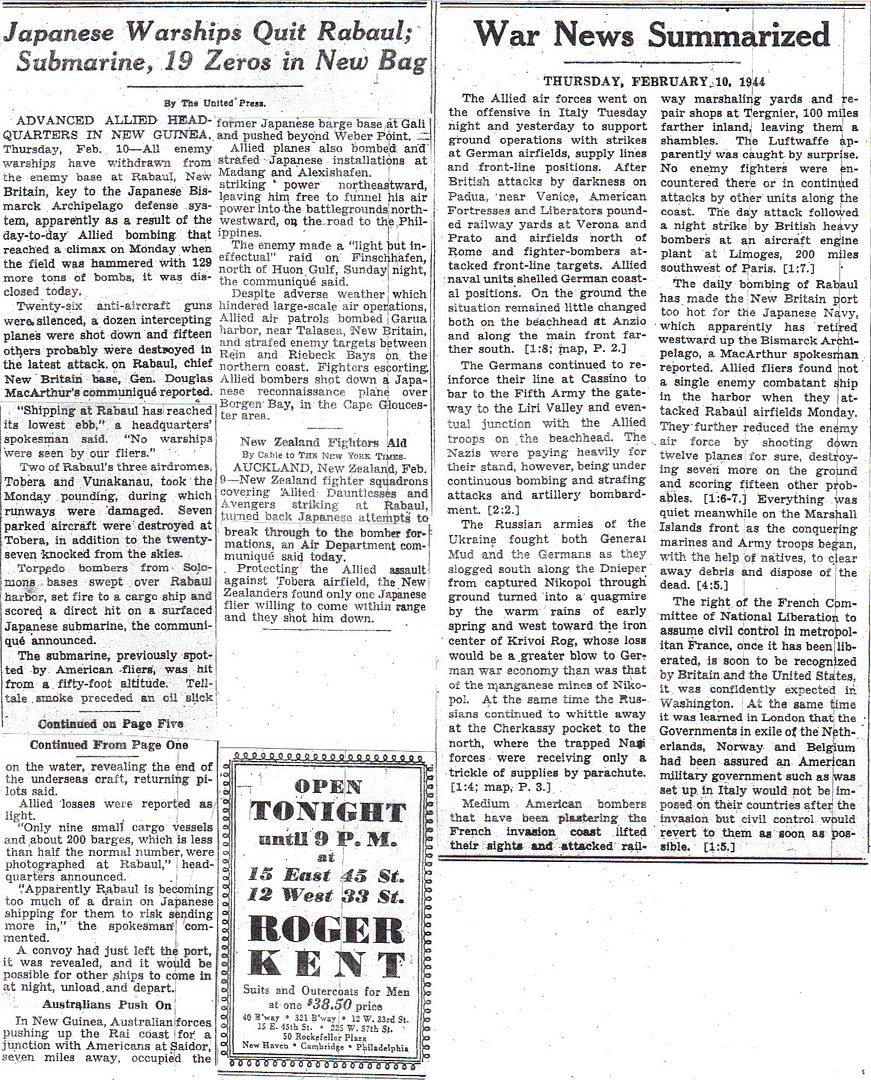
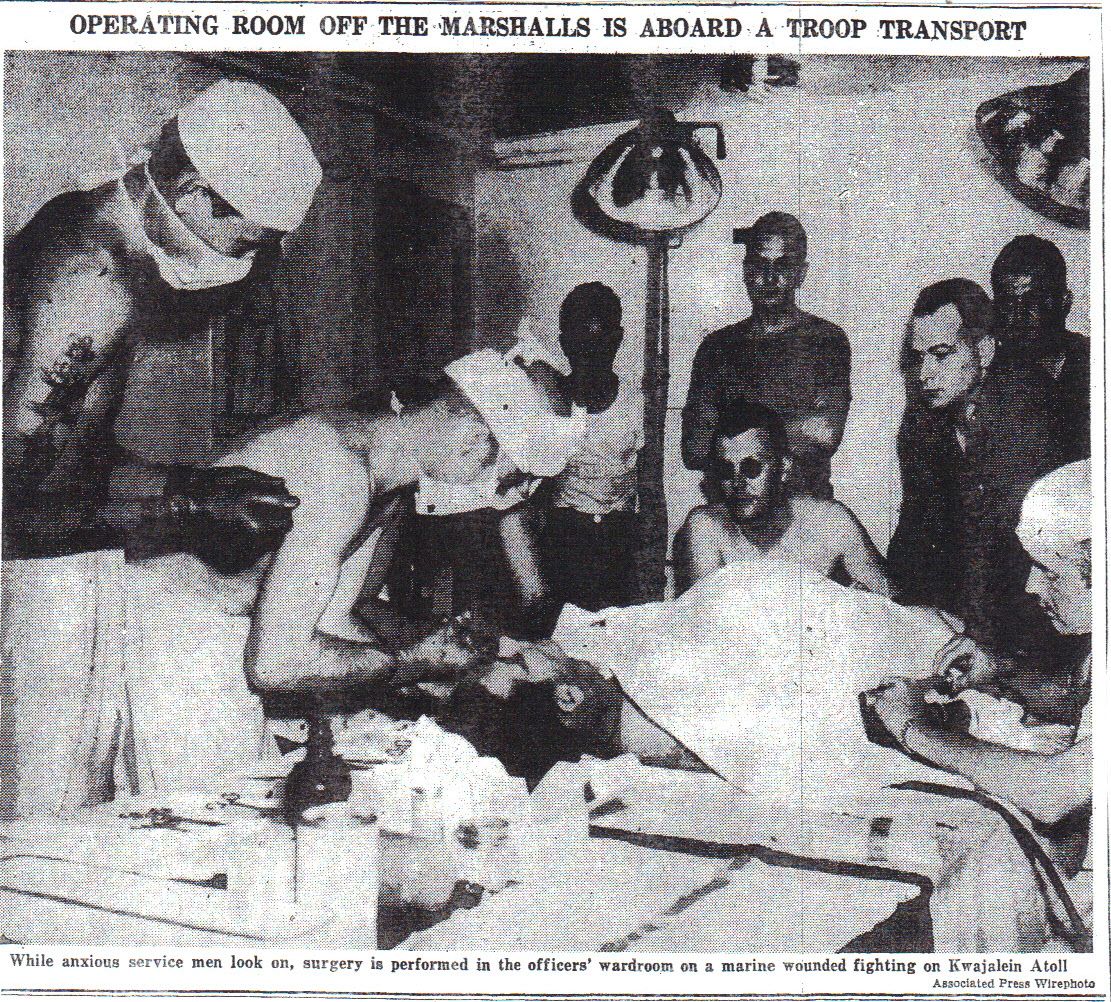
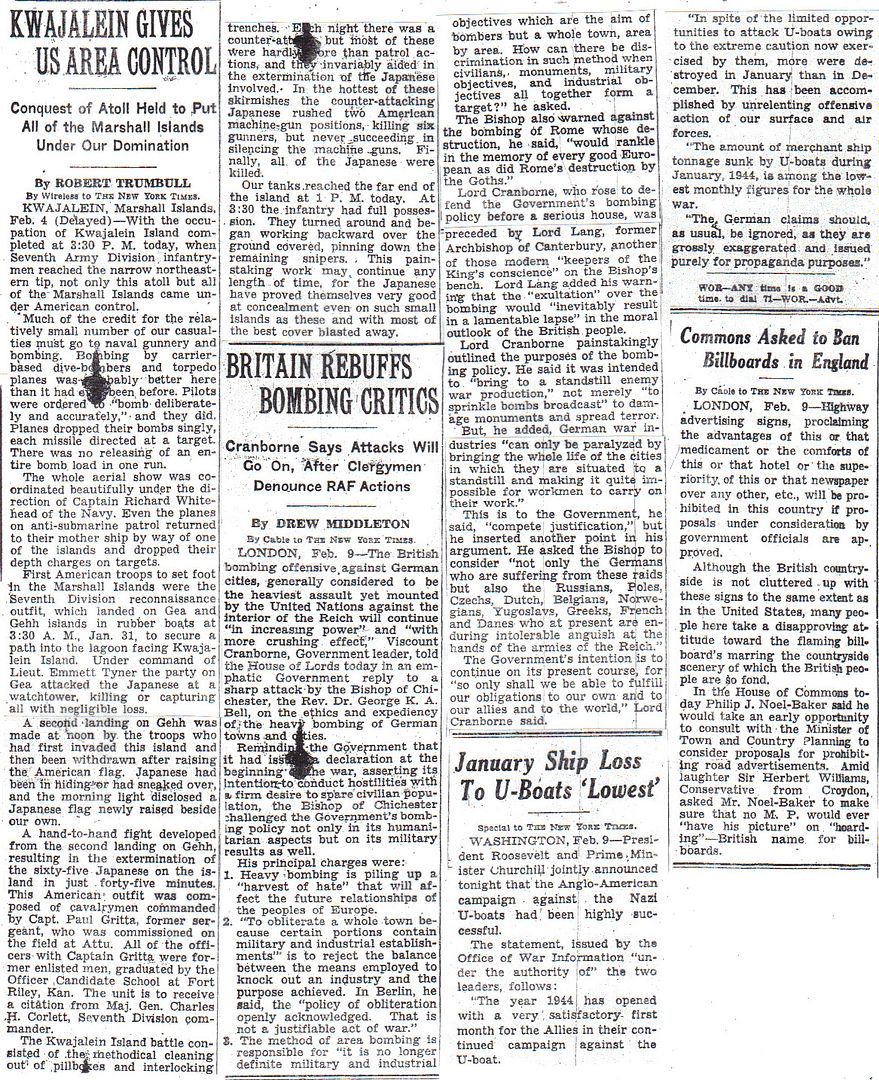
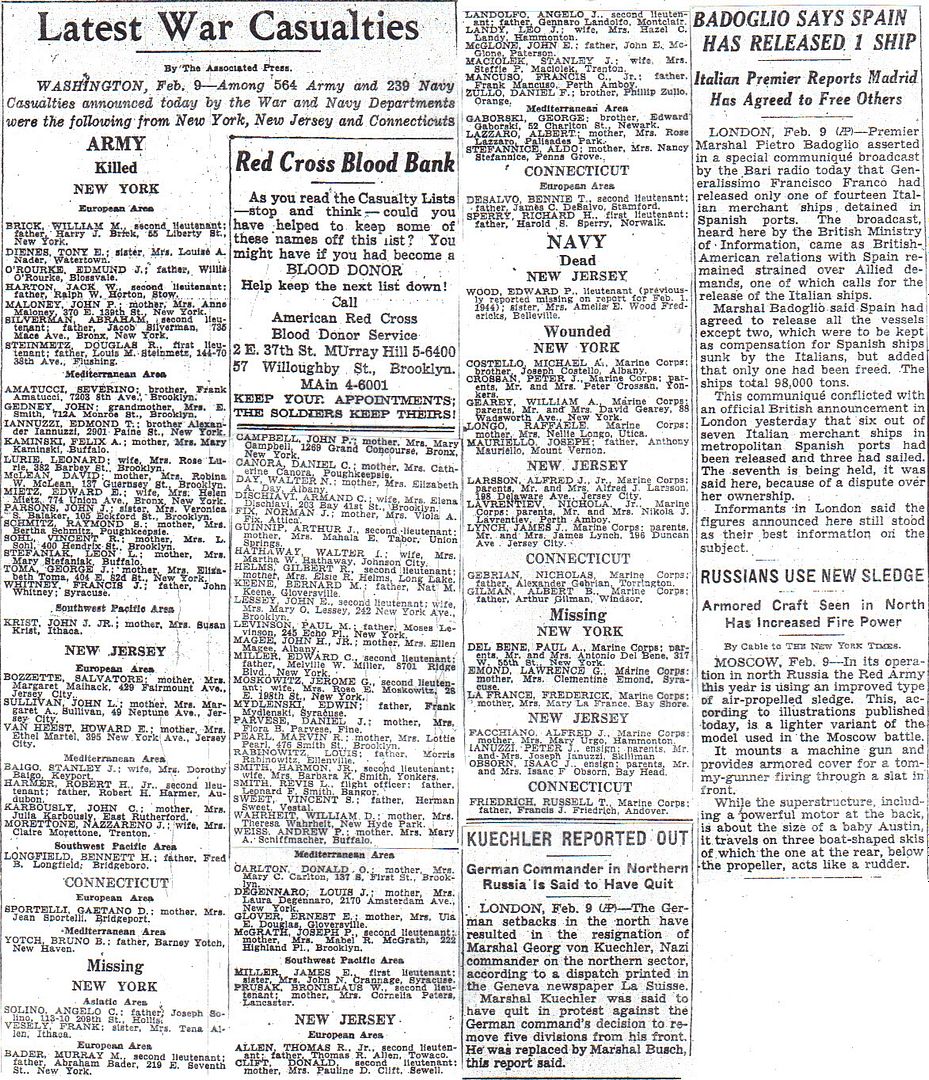
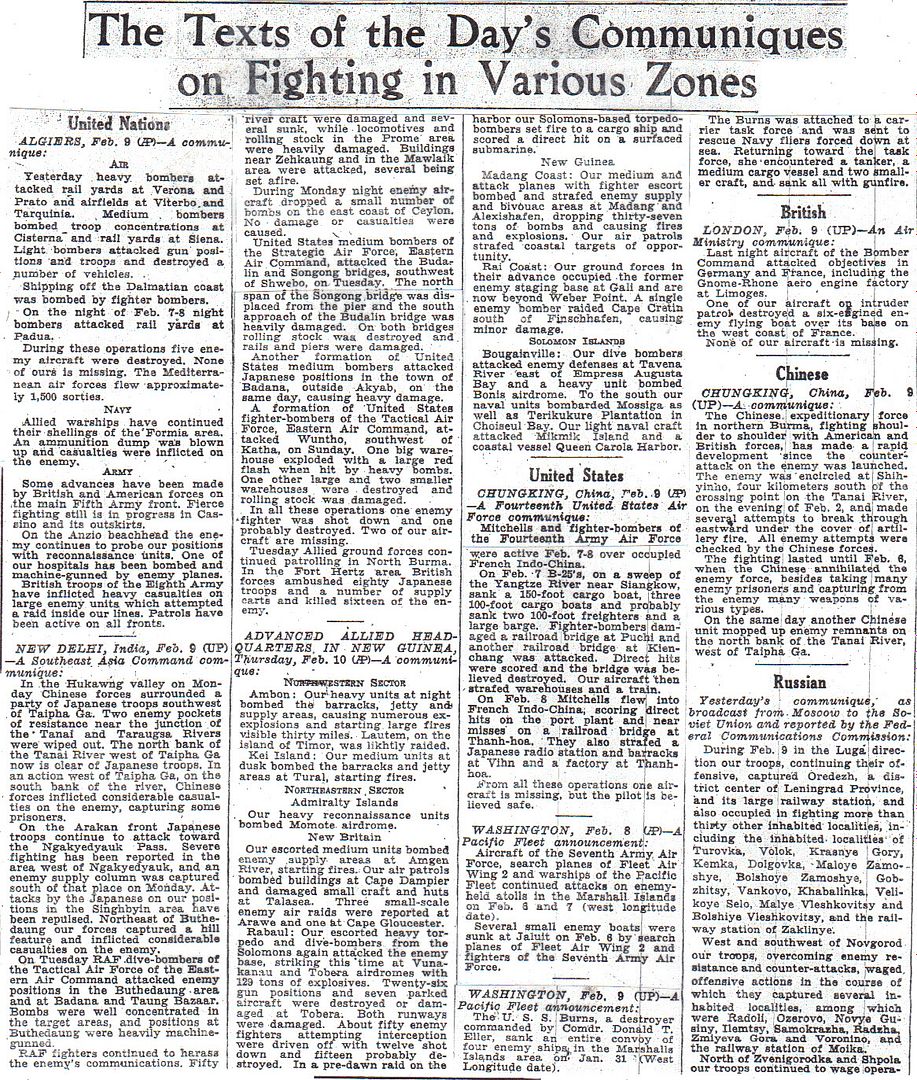

10 February. Enemy on the Sibog-Sindaman track have dug in and now have at least four pillboxes there. An estimated company of 150-200 Japanese are in the position.
A patrol returning came to the scene of the action where Captain Mooney and 5 men were killed. They found all six bodies. One man with a BAR had been leading, followed by the Captain and the rest of the patrol. The BAR-man evidently was wounded, for his body was found in a ravine about fifteen feet from the trail where he had crawled and died. The Captain and three others were killed instantly. There was evidence that one Sergeant had been wounded and then bayonetted to death.
Advance elements of the Australian 5th Division advancing northwest along the coast made contact with Michaelmas Force.
The arrival of the Australians in the Saidor area officially ended the Michaelmas operation.
Major General H.W. Blakeley, USA, Ret., The 32d Infantry Division in World War II
* I hope the surgeon at least has showered recently. Nice tat on the scrub nurse – HJS.
http://www.onwar.com/chrono/1944/feb44/f10feb44.htm
Australians link up with Americans
Thursday, February 10, 1944 www.onwar.com
American toops in New Guinea [photo at link]
In New Guinea... Australian forces advancing from Sio link up with American forces near Saidor. Allied forces now occupy most of the Huon Peninsula.
On the Eastern Front... Soviet forces of the 1st Ukrainian Front (Vatutin) capture Shepetovka.
http://www.etherit.co.uk/month/thismonth/10.htm
February 10th, 1944 (THURSDAY)
GERMANY:
U-872, U-1009, U-1203 commissioned.
U-880, U-1303 launched.
SPAIN: U-193 arrived in El Ferrol for repairs.
BURMA: Japanese troops take the Ngakyedauk Pass, cutting off the 7th Indian Division at Sinzweya.
The 1/7th Gurkhas fighting for “Bare Patch” move around the Japanese flank and by 2.20pm the Japanese, now denied water and almost completely surrounded, begin pulling out. Just over an hour later, the position is clear of Japanese. (Daily Telegraph, 21.10.2003, p.27)
NEW GUINEA: Australians from Sio link up with the Americans near Saidor.
CAROLINE ISLANDS: Japanese naval forces abandon Truk.
PACIFIC OCEAN:
Submarine USS Spearfish torpedoes and damages the Japanese transport ship Tatsuwa Maru (6345 BRT) SW of Formosa in position 21.53N, 119.13E.
Submarine USS Pogy torpedoes and sinks destroyer Minekaze and Malta Maru some 85 miles NNE of Formosa in position 23.12N, 121.30E.
CANADA: Frigate HMCS Antigonish launched Esquimalt, British Columbia.
U.S.A.: USS YMS-428 laid down.
Minesweeper USS Pochard laid down.
Minesweeper USS Caution commissioned.
USS PC-1180 commissioned.
ATLANTIC OCEAN: U-545 Kl. IXC/40 is Scuttled west of the Hebrides, in position 58.17N, 13.22W, after crippling damage from 4 depth charges dropped by a British Wellington aircraft (Sqdn. 612/O). 1 dead and 56 survivors.
U-666 Kl.VIIC Listed as missing in the North Atlantic. There is no explanation for its loss. 51 dead (all hands lost).
[U-545 was in fact attacked by two aircraft. The other one, a Canadian Wellington (Sqdn 407), was shot down during the attack.
The survivors were picked up by U-714 after a while and taken to St. Nazaire, France. Kptlt. Mannesmann then commanded U-2502. He died in an air raid on Hamburg on 8 April, 1945]
(Alex Gordon)
went to a parochial Catholic grade school in the 1950s/60s. the nuns who were for the most part conservative but apolitical at the same time, were very upset when discussing it in history class. They felt that the allies should have found a way around Casino rather than reduce it to rubble. Of course the US spent whatever was needed to rebuild it.
in other news, in 1962 my 8th grade nun, told us that Kennedy could never(would never) sign a bill permitting abortion. as it was he never had that decision on his desk.
Heh, that made me look!
"With his body held taut by two Kapos, a camp prisoner awaits the sting of the lash on his bare back.
Even the slightest offense could lead to harsh penalties.
Punishment, like this whipping, could so weaken an inmate that he could no longer work, and failure to work meant death.
This drawing by Hungarian artist Gyorgy Kadar, who survived five camps, powerfully conveys the inmate's suffering and anguish."
"Deportations of Dutch Jews began in 1942 and were largely complete two years later.
Most of the deportees were sent to Westerbork, and from there to Auschwitz or Sobibór.
Few Jewish citizens of the Netherlands remained in the country in 1944, and their options were limited: hide; pay outrageous sums to local extortionists who promised to delay or cancel deportation orders; or resist.
Here, members of the Dutch underground secrete a rifle and 9mm ammunition beneath a bathroom floor."
Destroying the abbey didn't help the allied cause. The Germans hadn't occupied it but afterwards used the rubble for good defensive positions.
The article lists both pros & cons for bombing German cities, leaving out some that, to later historians seem as, or more, important.
Chief among these is the fact that to defend its cities, Germans withdrew huge manpower and material resources from other fronts -- particularly in the East.
That effectively made allied bombing another "Second Front" Stalin kept asking for.
But in the end, those churchmen got their "last laugh", since once the bombings' purpose was accomplished, Churchill's government eventually turned against the bombers themselves, both to mollify the churchmen and in hopes of allying with post-war Germans against Stalin's Soviet Union.
Every flak gun defending the skies of the Reich could have been shooting up T-34s instead.
I’ve seen that fact in a number of presentations on the Military channel. the rubble was a better high ground than the abbey itself. but who knew. all the allies knew was that the Germans had it and we needed to take it....
the allies did amphibious end runs around German lines on the peninsula though...like Anzio....but I do believe the mountainous spine of Italy was not completely defeated till operation overlord when the focus was on northern france and the Germans sent troops up that way...as did the allies.
The other factor in Italy is the weather, which is hampering air operations and making the life of the infantryman an awful mess. Once summer comes with warm, dry weather, the allies can operate freely in the air, and mobility is restored to the ground units. Of course, Italy is a low priority for the Germans behind France and Russia. While they are not getting many replacements, the Germans did not feel the need to pull units out of Italy wholesale, as the offensive that broke the Gustav Line began before D-Day and also before the Soviet summer offensives.
I would say that while the Germans are making good use of the terrain, it’s really the weather that is keeping the Allies in check.
Weather and possibly the big Vesuvius eruption of 44
By the way, he really did torpedo a ship that he mistook for the Ranger.
One of the churchman’s points boils down to “disproportionate response.” We’re still dealing with that crap today. Your objective in war is to make the other guy suffer disproportionally.
The Allies in the Mediterranean did not have a lot of good options for offensive action after Sicily. Churchill was pushing for more dangerous adventures in Greece and the Balkans.
The Germans learned that lesson from Stalingrad, when the Russians used the rubble there to their advantage.
Disclaimer: Opinions posted on Free Republic are those of the individual posters and do not necessarily represent the opinion of Free Republic or its management. All materials posted herein are protected by copyright law and the exemption for fair use of copyrighted works.